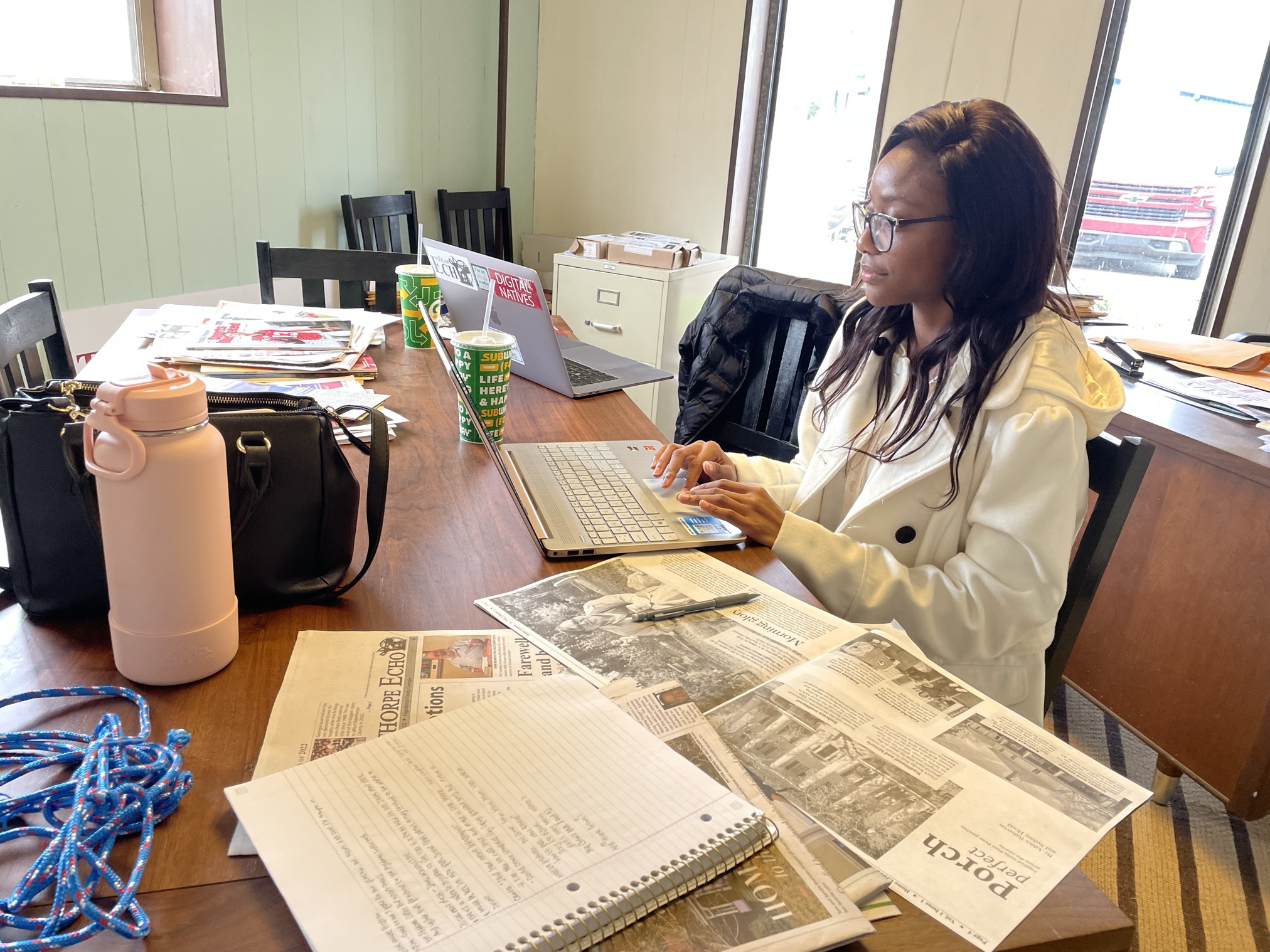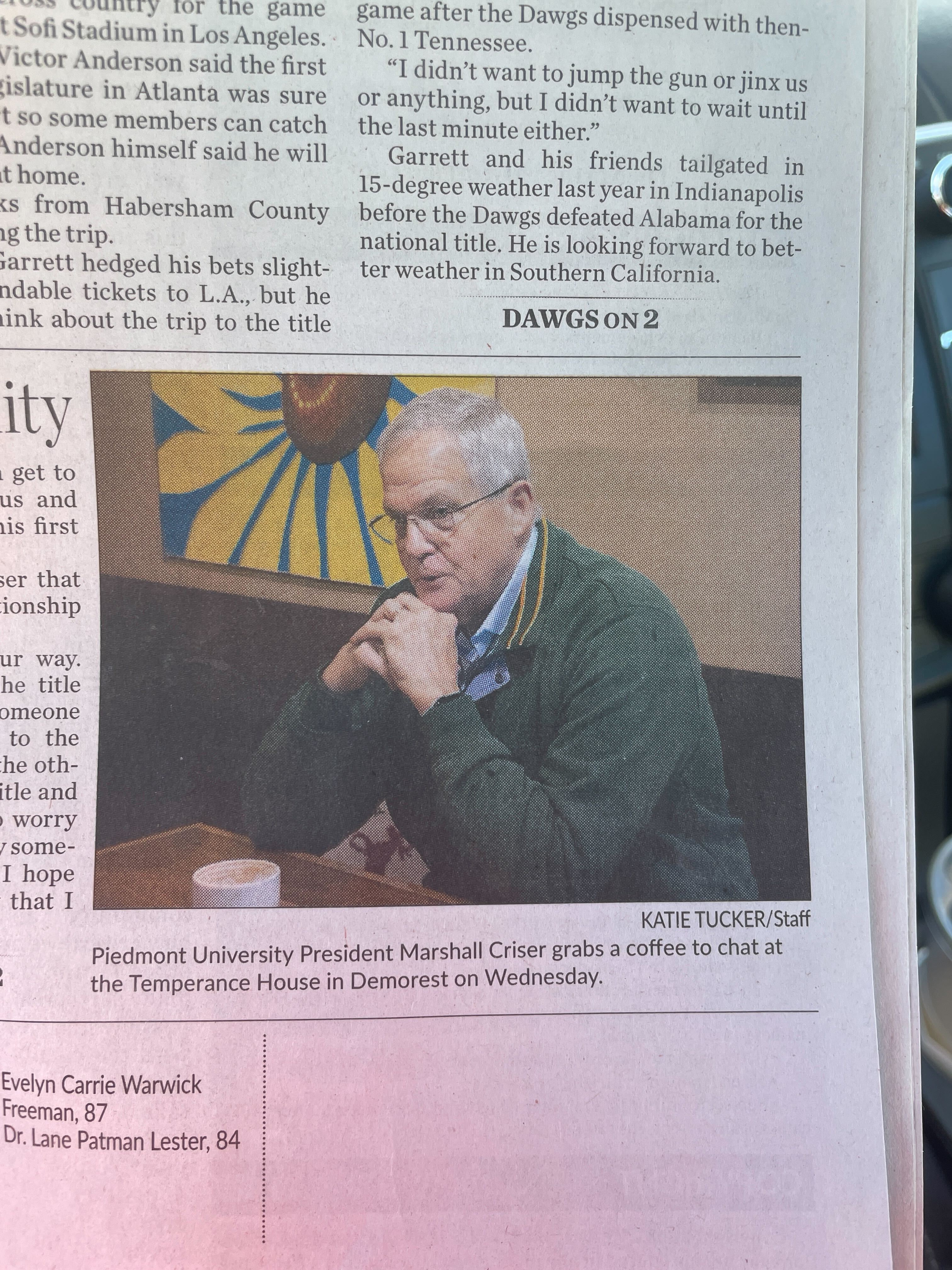Cox Institute’s Digital Natives program completes 3rd year

Cox Institute’s Digital Natives program completes 3rd year
Before classes began this semester, 14 journalism students spent the first week of January innovating with newsrooms across Georgia. Some students created newsletters, some developed existing social media accounts, and others focused on video storytelling. All of them left an impact on local news organizations as they helped them achieve digital goals and develop new audiences.
Digital Natives is a program funded by Richard T. and Deborah H. Griffiths, the Georgia Press Association and the Grady College of Journalism and Mass Communication at the University of Georgia. It is a program of the Journalism Innovation Lab within the Cox Institute for Journalism Innovation, Management & Leadership.
Students spent a month preparing for the program, working with newsroom leaders to determine their goals. Preparation included creating a detailed weeklong plan for the students’ week on-site with newsrooms, which began Jan. 2.

Dr. Amanda Bright, who leads the program, said the program’s purpose is to pair UGA journalism students with news organizations across Georgia to accomplish specific digital goals.
This was the third year of the program. Thanks to the support from Richard T. and Deborah H. Griffiths, Bright said the program has expanded through the years from eight students to 14. Since its beginnings, the program has expanded to include broadcasters in addition to print organizations – this year, 2 broadcasters participated. Five newsrooms returned to participate from previous years.
This was the first year that the majority of the students were able to work on-site. Bright said the relationships between the newsrooms and the students have improved since the program’s start.
“We have gotten better at understanding how to communicate what we’re trying to achieve both to newsrooms and to students,” she said.
Bright said the most rewarding part of the leading this program is both seeing the students build their confidence, while also knowing that the newsrooms are gaining new strategies and knowledge built specifically for them.
“When I get evaluations or I get contacted by these newsroom leaders, they are always universally pleased with the work that the students do,” she said.
“Those comments and those conversations are just so heartening for me because I love community news. I believe in it more than just about anything else, and I want to help it,” Bright said.

Fourth-year journalism student Katie Tucker spent the week at The Northeast Georgian in Cornelia and its sibling paper in White County. During the week, Tucker created new content for the newsroom’s Instagram and Facebook accounts, created templates for best social media practices, and developed an analytics sheet for the newsroom staff to track their monthly analytics.

“I feel like so much of my journalism career has been during covid, and so everything’s virtual,” Tucker said. “Having that physical newsroom space where I can walk over and talk to someone and share ideas and get immediate feedback is something I’ve never had.”
Tucker said having this experience in a physical newsroom allowed her to realize she prefers working in-person instead of working remotely, which is helping her now as she searches for jobs.
In addition to helping the newsroom with digital goals, Tucker helped with stories during her week on-site at The Northeast Georgian. She took photos of Piedmont University President Marshall Criser while reporters were interviewing him, which ended up being published in the paper.
“I think that was the most valuable thing I could’ve done,” Tucker said.
Lu Warnke is a third-year journalism major who spent the week at Connect Savannah. Warnke helped the newsroom restructure their Trello board and created a new calendar system to plan content.
“They just transitioned from a primarily print publication to a digital-first one, so I hope I gave them some tools to look ahead and re-orient their thinking towards digital,” Warnke said.
“I really loved being able to make a tangible difference in a newsroom. Local newsrooms are vital to connecting and informing people, so to help an organization further that mission also meant a chance to strengthen a whole community,” Warnke said.
Asya McDonald’s spent the week at The Current in Savannah, teaching the journalists how to edit video both on their phone in iMovie, and on their laptops and Adobe Premiere Pro.
“While I was at The Current, the staff raved about all the things that they had learned and how excited they were about video production for their print stories. Adding the element of video was something that was going to be new for their audience, and hopefully garner them additional audiences,” she said.
Shannon GaNun of The Current in Savannah referenced McDonald’s help in incorporating video into their storytelling.
“Asya worked with everyone in our organization one-on-one to teach us how to make and edit videos,” GaNun said. “We were very impressed with Asya’s skill set and professionalism.”
“The most rewarding part of participating in the Digital Natives program is being available to be hands on with industry professors to see if their field of journalism is the path that I want for my future,” McDonald said.
Video was an area of interest and desired growth for many newsrooms this year, Bright noted.
While specific goals for each newsroom differed, Bright said a goal across the newsrooms was audience growth, especially among younger audiences.
“To me, it’s about finding the right path – and it’s different for every newsroom, but they all want new audiences,” she said.
Looking forward, Bright hopes the program will expand. She’s considered doubling the number of students and news organizations involved, and going beyond state lines.
“It’s just about making sure that we don’t grow beyond our capability to do a really good, quality job,” she said. “We’ll have to get the support to make that happen.”
News organizations and students interested in participating in the 2024 program can learn more on this page. Applications will open in October 2023.
Author: Ashley Balsavias